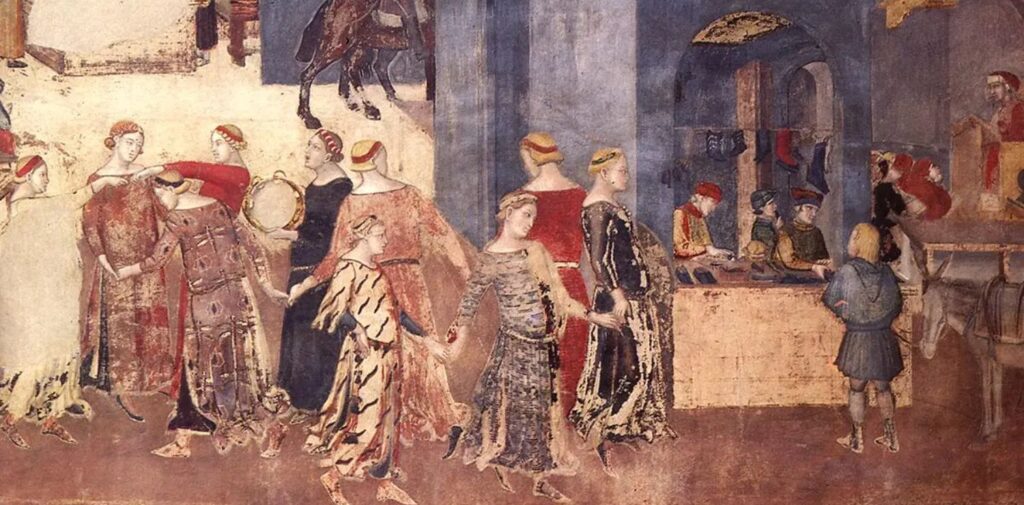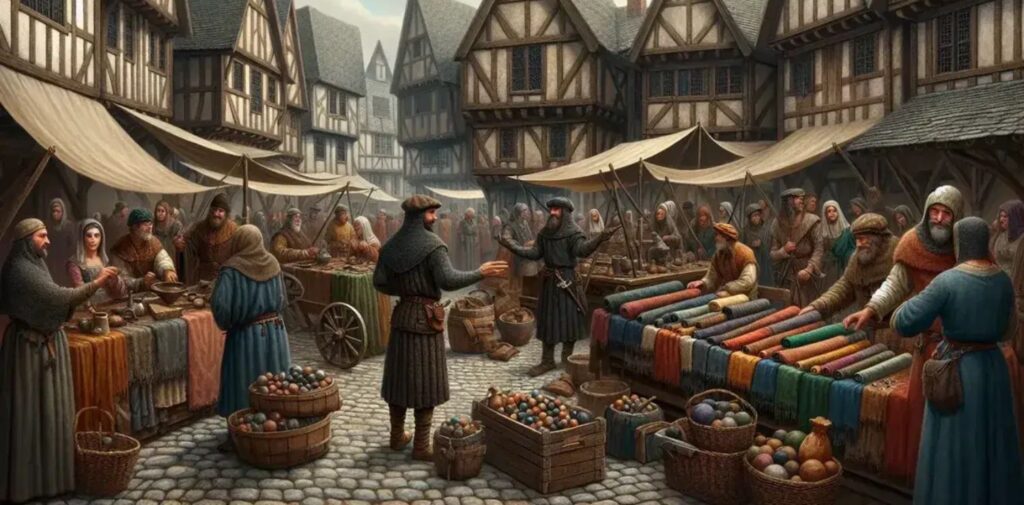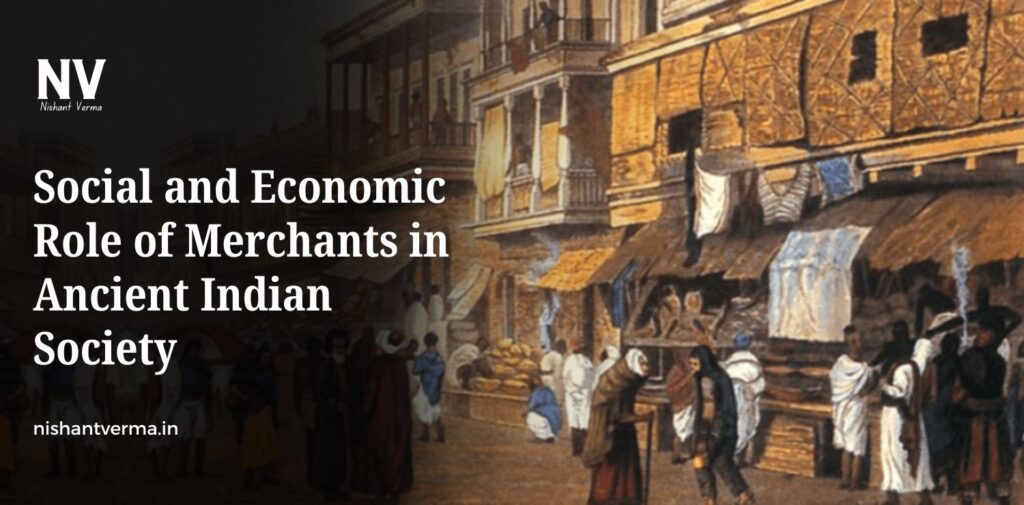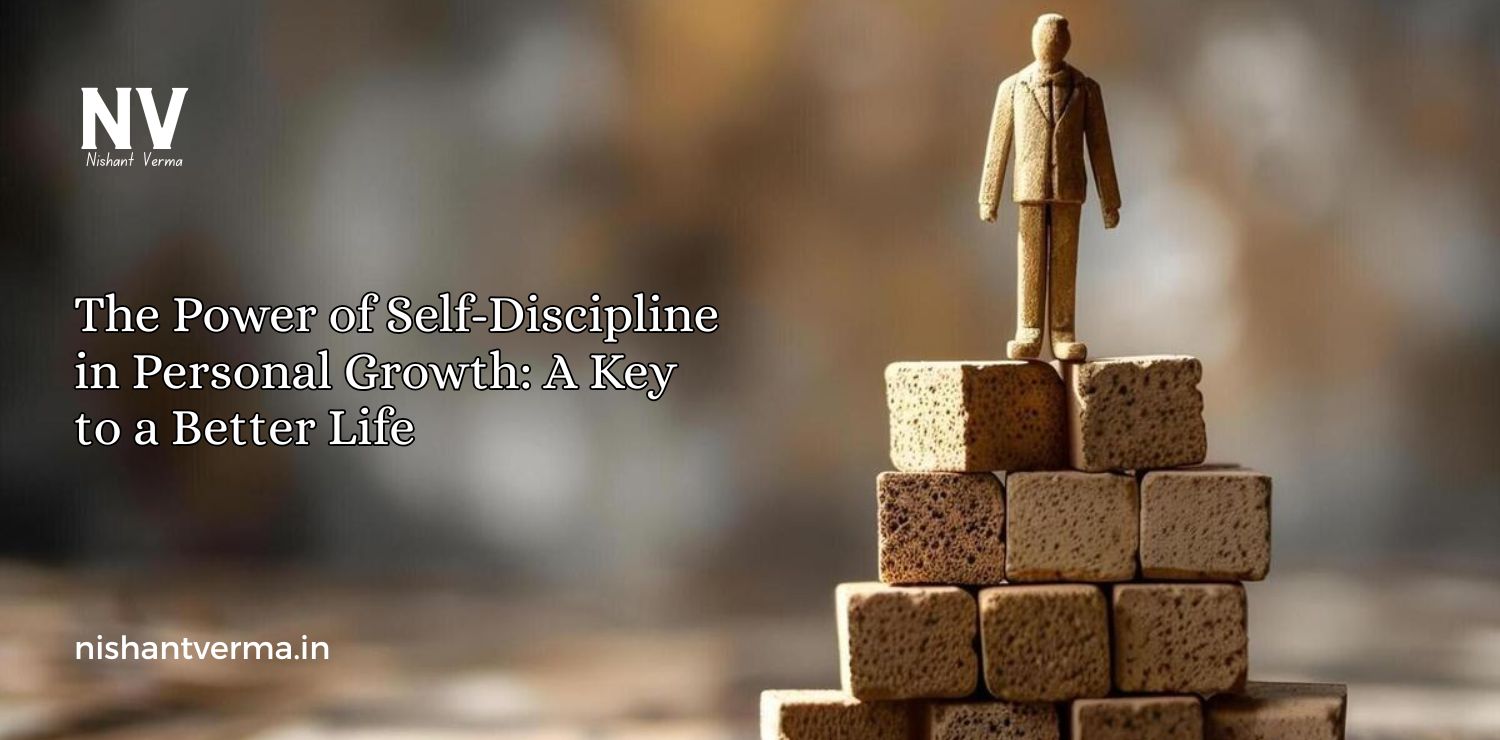In ancient India, merchants played a significant role in the economic and social fabric of society. They were not just traders; they were key figures in the development of both regional and long-distance trade networks. The society’s dependence on merchants for goods, services, and wealth creation was immense. Through their activities, they contributed to the growth of urban centers, cultural exchange, and the spread of ideas. Let’s dive deeper into the social and economic role of merchants in ancient India.
Merchants as Economic Pillars
The economy of ancient India was highly dependent on agriculture, handicrafts, and trade. Merchants, known as “Vyaparis” or “Banijis” in Sanskrit, were central to the functioning of this economy. They bridged the gap between producers and consumers, distributing goods within local markets and facilitating trade between distant regions.
- Trade and Commerce: Merchants were responsible for the exchange of goods both within India and with foreign countries. Ancient Indian merchants were known for trading in a wide variety of items such as spices, textiles, precious stones, metals, and more. They played a critical role in the development of commerce and the flow of goods in and out of India. Goods were exchanged not only for money but also for other products, marking the existence of a barter system. India’s favorable geographical location made it a prime player in the global trade network. Merchants were instrumental in establishing trade links with other ancient civilizations such as Mesopotamia, Egypt, Greece, and China. Indian merchants traveled via land and sea routes, such as the famous Silk Road and the maritime routes connecting the Indian subcontinent to Southeast Asia, the Middle East, and beyond.
- Economic Growth and Urbanization: Merchants were key drivers of urbanization. The establishment of markets and trade hubs in cities like Pataliputra (modern-day Patna), Taxila, Ujjain, and others is a direct result of the thriving trade activities. As cities grew, merchants not only traded goods but also invested in infrastructure, such as warehouses, markets, and inns, which further contributed to the growth of urban life. Through their trade activities, merchants also helped stimulate local economies, bringing in wealth, providing employment, and encouraging the development of various industries. This economic development had a ripple effect, positively impacting agriculture, crafts, and the overall standard of living in many regions of India.

The Social Status of Merchants
In ancient Indian society, the position of merchants was influenced by the caste system, which categorized people into four primary varnas: Brahmins (priests and scholars), Kshatriyas (warriors), Vaishyas (merchants and landowners), and Shudras (laborers). The Vaishyas, to which merchants belonged, were considered the third most respected group in society.
Though merchants held a relatively high status in the caste hierarchy, their social life was largely influenced by their wealth, knowledge, and connections. In comparison to the ruling Kshatriyas or the learned Brahmins, merchants were often looked at as more practical and financially successful individuals.
Social Influence of Wealth
As merchants accumulated wealth through trade, they gained significant social influence. Wealthy merchants were known to contribute to the local community, donate to temples, and even support religious activities. In return, they earned respect and prestige in society. Many merchants formed guilds, which were organizations that not only regulated business practices but also provided mutual support for their members in times of need.

Role of Merchants in Cultural Exchange
Trade in ancient India was not just about the exchange of goods; it was also a conduit for the spread of culture, religion, and knowledge. Merchants, through their travels, played an essential role in cultural exchange. They interacted with people from various parts of the world, bringing new ideas, technologies, and customs back to India.
- Spread of Religion: The role of merchants in spreading religion, especially Buddhism, Jainism, and Hinduism, cannot be overstated. Merchants often traveled to distant lands, and as they did, they carried religious teachings with them. Buddhism, for example, spread along the trade routes due to the efforts of merchants and travelers who communicated Buddhist philosophy to foreign lands. Merchants also helped in building temples and religious institutions, playing a part in the spread of spiritual practices.
- Exchange of Ideas and Innovations: Merchants also facilitated the exchange of knowledge and innovation. Through their interactions with people from different cultures, they brought back scientific, mathematical, and literary ideas. The knowledge of astronomy, mathematics, and medical sciences, which reached India from the Greeks, Arabs, and Chinese, was absorbed and used in various fields such as agriculture, medicine, and architecture. Merchants helped transfer these ideas and ensured their survival and growth.

Merchants and the Development of Infrastructure
The success of merchants in ancient India was not just based on trade alone but also on the infrastructure that supported their activities. Ancient India saw the development of roads, ports, and markets that facilitated smooth trade.
- Roads and Ports: The Mauryan Empire (322–185 BCE) established a network of roads connecting important cities, such as Pataliputra and Ujjain, to facilitate trade. The Roman Empire, the Greek Empire, and the Indian subcontinent were all connected through these roads, enabling merchants to travel long distances efficiently. The roads were often paved, and inns and rest houses were built for the comfort of traders. Ports such as those in Gujarat, Tamil Nadu, and Bengal were developed to promote maritime trade. These ports facilitated the transportation of goods to and from distant lands, enhancing India’s position in the global trading community.
- Markets and Guilds: Local markets flourished in various regions due to the continuous demand for goods. In addition to these markets, merchant guilds became an essential part of ancient Indian society. These guilds regulated trade, set standards for quality, and ensured fair practices. They helped create an environment of trust and cooperation, which was crucial for the long-term success of trade.
Conclusion
The social and economic role of merchants in ancient Indian society was vital in shaping the nation’s growth and prosperity. Merchants not only contributed to the development of the economy through trade but also played an integral part in the cultural exchange that enriched Indian society. They helped spread ideas, fostered innovation, and were key figures in the growth of urbanization. Their social status and influence were a testament to their significance in the ancient Indian world. Through their efforts, merchants helped lay the foundation for India’s prosperous future in trade, culture, and economics.




